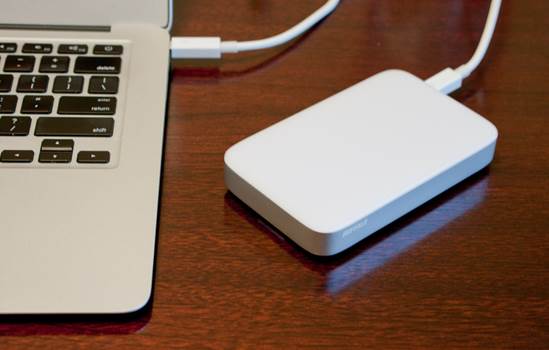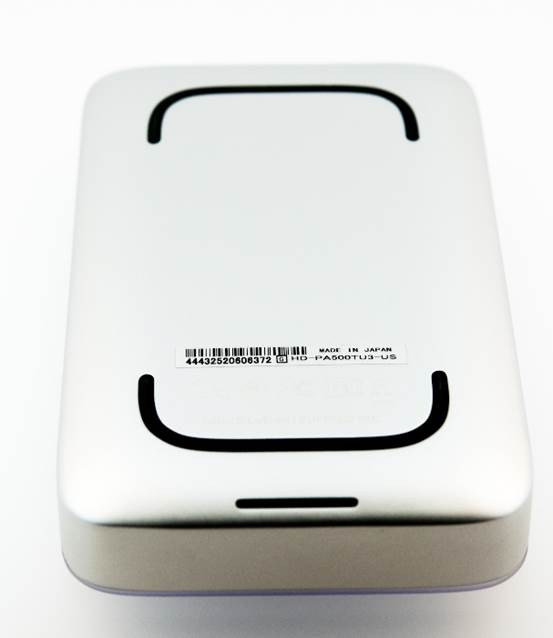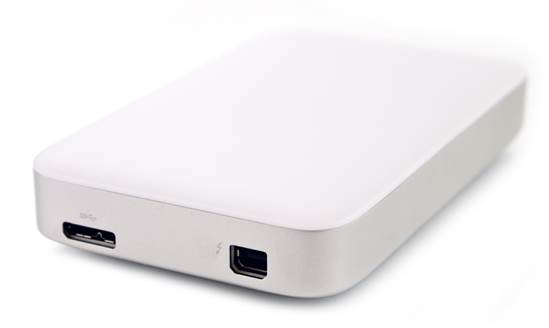Designed for Mac users and priced
accordingly
PC users have been in a bit of a quandary
about the new Thunderbolt interface from Intel. On the one hand, we're all
about maximum performance, so given its sizable speed advantage over USB 3.0,
at least on paper, we’re eager to adopt it. On the other hand, there are three
issues that have prevented us from jumping on the Thunderbolt bandwagon with
both feet. The first is the fact that it debuted on the Apple platform.
Granted, we're a bit sensitive, but this just rubbed us the wrong way. Second,
Thunderbolt doesn’t exist on LGA2011 due to a requirement for integrated
graphics. And finally, we already have USB 3.0, so do we really need
Thunderbolt? Sure, it's twice as fast on paper (10Gb/s versus 5Gb/s), but will
we see that benefit in the real world, and is it worth the cost? To help us
answer all these nagging questions we snagged a very special hard drive, the Buffalo
MiniStation Thunderbolt, which has both USB 3.0 and Thunderbolt ports, allowing
us to test both interfaces back-to-back and make an apples-to-apples
comparison.

The
Buffalo MiniStation Thunderbolt/USB portable HDD is a relatively inexpensive
way of carrying a lot of data in a small package without having to worry too
much about how you're going to connect it to your computer.
Upon first glance, it’s apparent this is a
Mac-oriented drive, both in its Thunderbolt support as well as its aluminum
exterior and rounded edges. It doesn’t help that the documentation for the
drive states that it comes preformatted for Macs, but don't prejudge the drive
just yet - that's our job. In addition to shipping with both T-bolt and USB 3.0
interfaces, the drive also includes both cables, which is amazing since a
Thunderbolt cable costs $50 alone. Inside the enclosure lies a 5,400rpm Samsung
hard drive with 8MB of cache. The drive includes a 3-year warranty, is also
offered in 1TB capacity, and includes no software whatsoever.

The
MiniStation has a belly-mounted white LED that "breathes" when
there's drive activity; we dig it
To test the drive, we performed real-world
and synthetic tests, and came to a somewhat unsurprising conclusion in this
iteration, with a 5,400rpm hard drive inside of it, this device is hamstrung by
the drive itself, not the interface. In every test we ran, the drive performed
exactly the same regardless of the interface we used, making the benefit of
Thunderbolt in this instance primarily one of convenience rather than
performance. For example, it would be useful if you are a person who owns both
a Mac with Thunderbolt and a PC with USB 3.0, or an older MacBook with just USB
2.0 ports. Or you could be a PC user who wants the flexibility of using Thunderbolt
and USB for file-sharing with buddies. Either way, the drive isn’t any faster
on either interface in its current form. Not only did it score the exact same
write times down to the second when we copied 30GB of data, but it scored the
same read and write speeds in HD Tune and ATTO, as well. For example, HD Tune
clocked the drive at 80.7MB/s read speeds via Thunderbolt, and when using USB
3.0 it ran at 80.8MB/s.

The
drive's design is taken directly from the minimalist playbook with the rounded
corners and curved edges favored by Apple.
Now for the bad news: This drive costs $200
for 500GB, which is wildly expensive since you can get a Toshiba Canvio 1.5TB
drive that is just as fast as the MiniStation for just $110. Thunderbolt could
one day be the bitchin' interface we’re all using, but for now it’s too exotic
and overpriced compared to USB 3.0.
|
Specifications
§ Price:
$200
§ Website:
www.buffalotech.com
§ Capacity:
500GB (HD-PA500TU3-US); 1TB (HD-PA1.0TU3-US)
§ Thunderbolt
Interface: x1
§ USB
Interface: x1 USB3.0
§ Dimensions
(W x D x H): 3.2 x 5.1 x 0.9 in. / 80.5 x 130 x 22.5mm
§ Weight:
9.17 oz. / 260g
§ Power
Supply: DC 5 V (Bus-powered)
|